Full text
PDF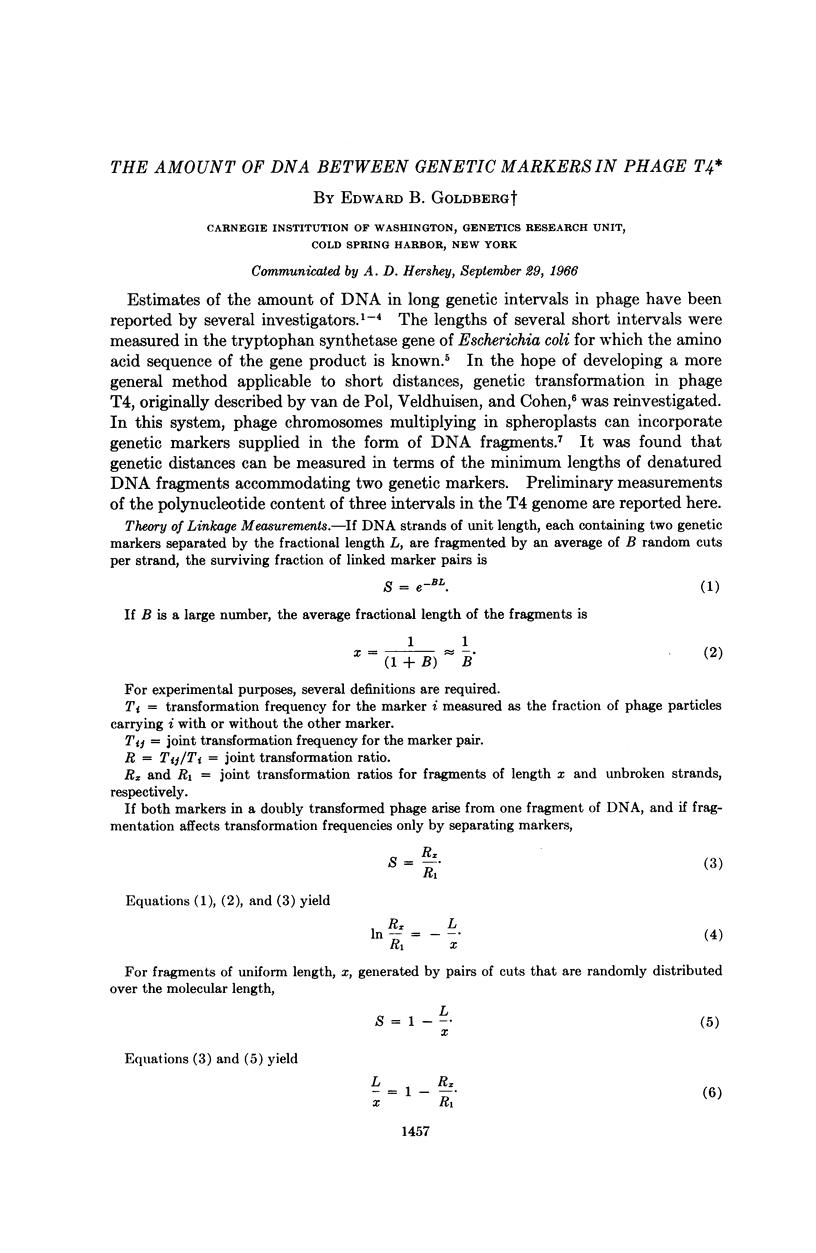
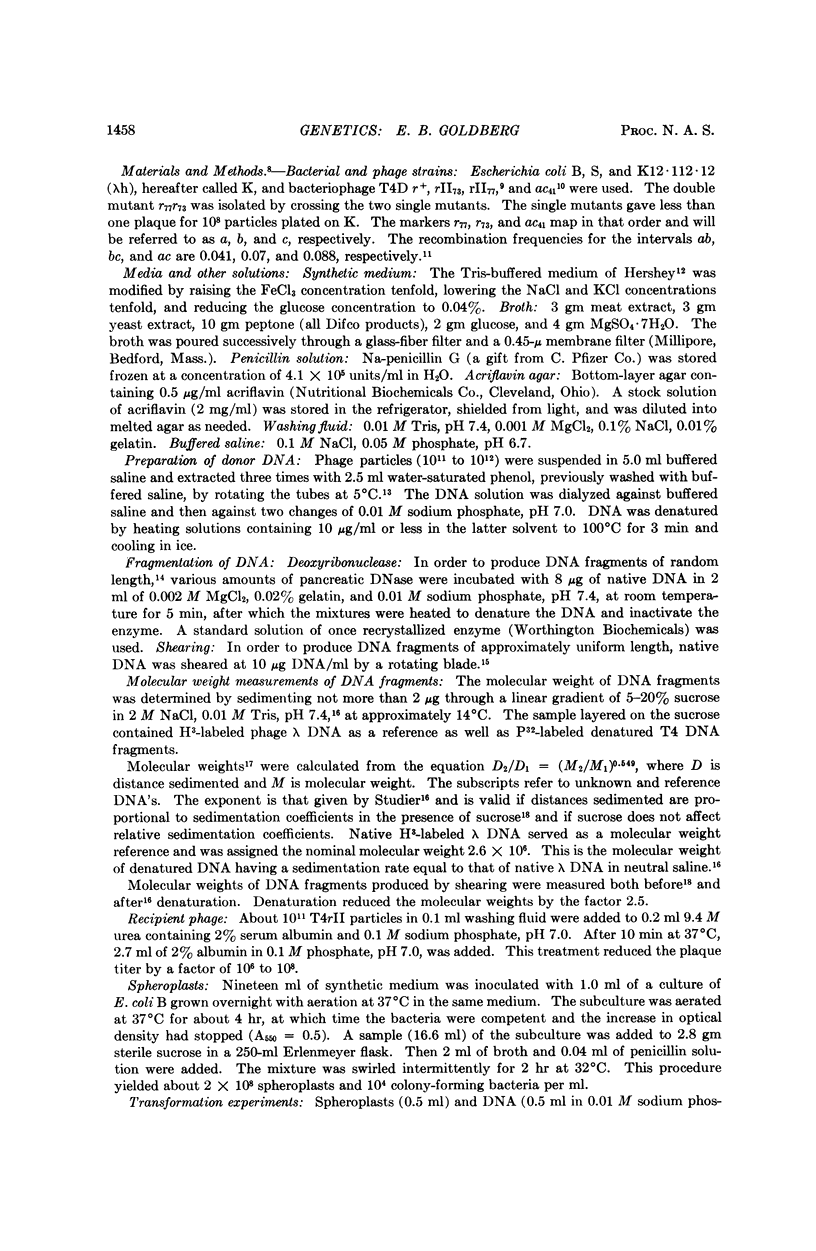
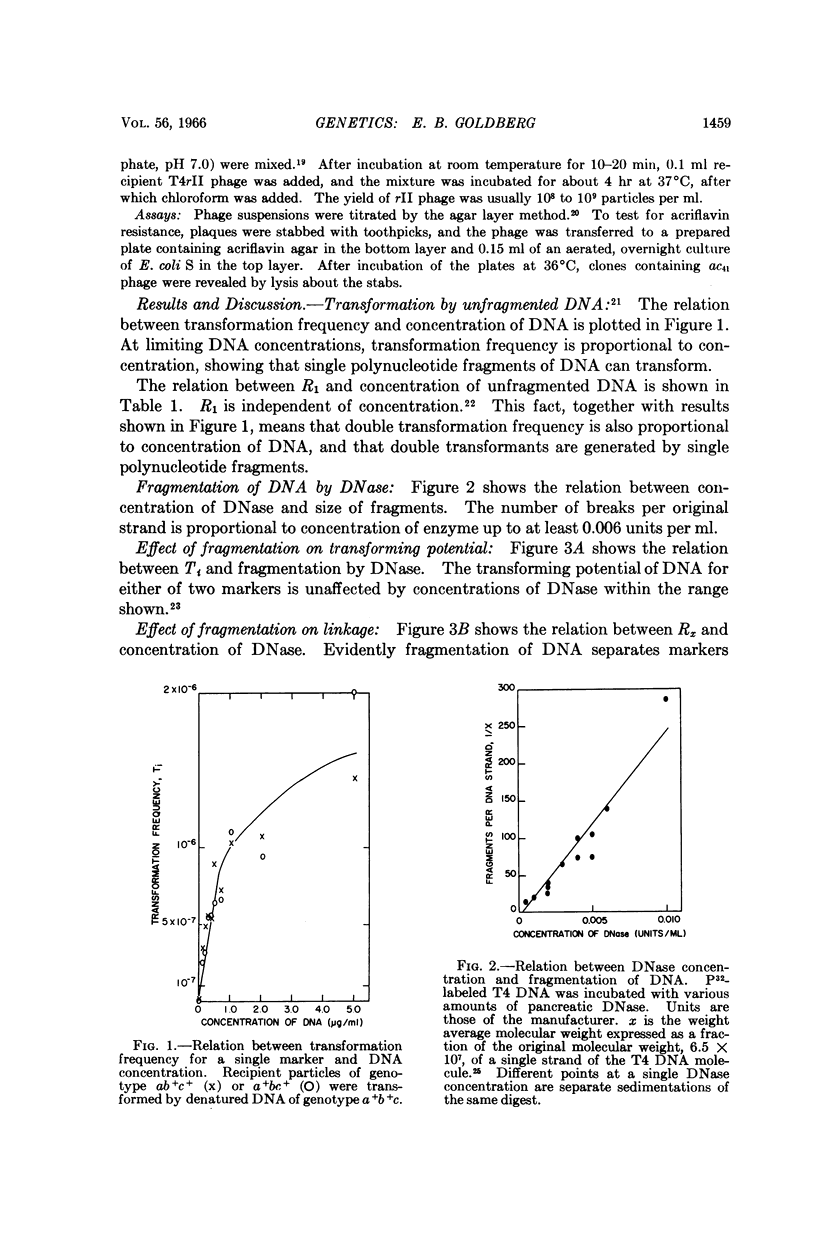
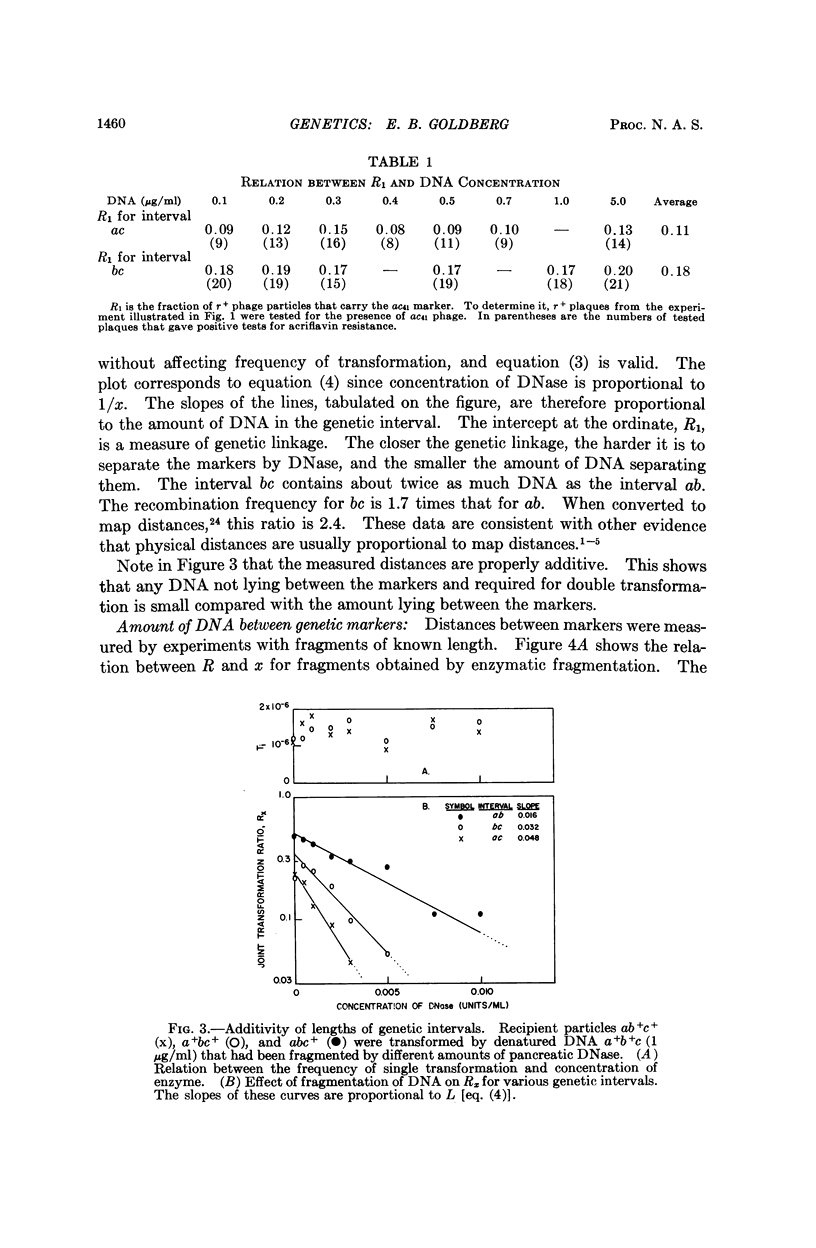
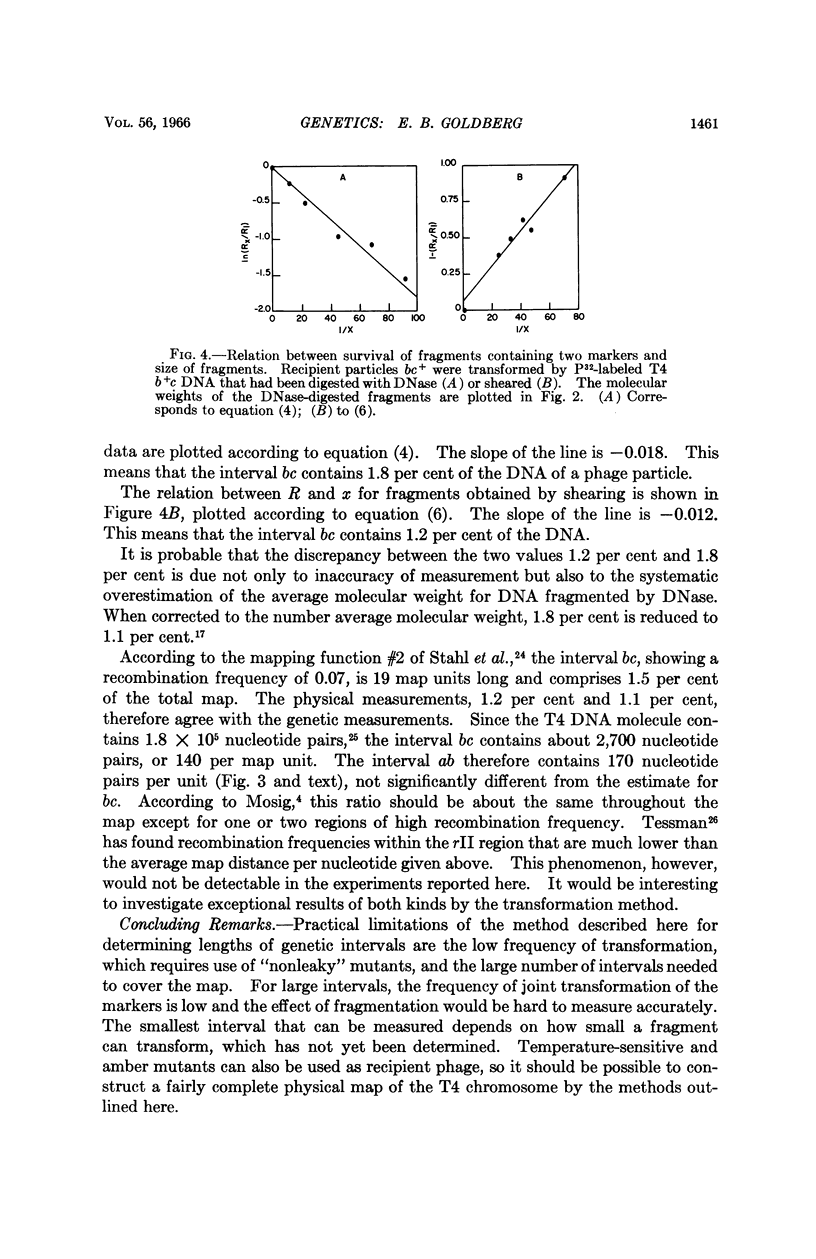
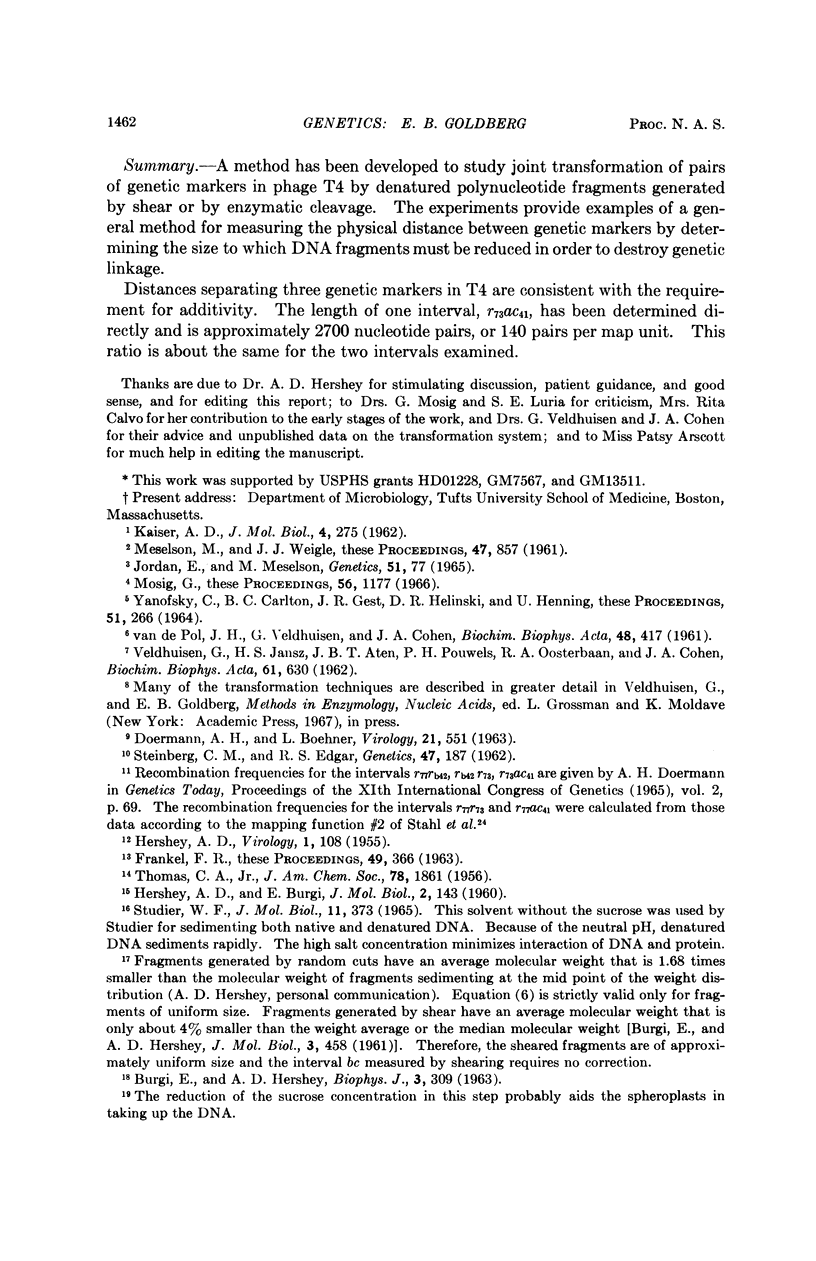
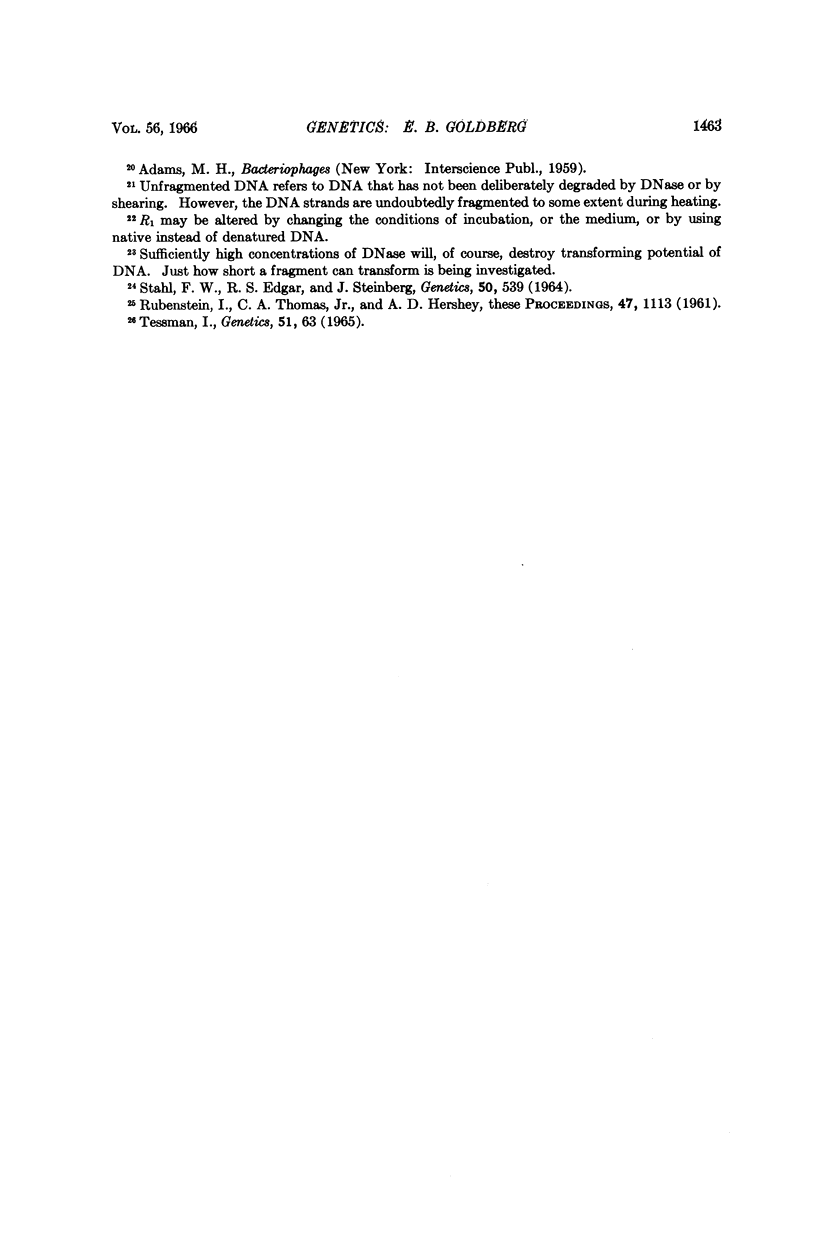
Selected References
These references are in PubMed. This may not be the complete list of references from this article.
- BURGI E., HERSHEY A. D. A relative molecular weight series derived from the nucleic acid of bacteriophage T2. J Mol Biol. 1961 Aug;3:458–472. doi: 10.1016/s0022-2836(61)80058-2. [DOI] [PubMed] [Google Scholar]
- BURGI E., HERSHEY A. D. Sedimentation rate as a measure of molecular weight of DNA. Biophys J. 1963 Jul;3:309–321. doi: 10.1016/s0006-3495(63)86823-x. [DOI] [PMC free article] [PubMed] [Google Scholar]
- DOERMANN A. H., BOEHNER L. AN EXPERIMENTAL ANALYSIS OF BACTERIOPHAGE T4 HETEROZYGOTES. I. MOTTLED PLAQUES FROM CROSSES INVOLVING SIX RII LOCI. Virology. 1963 Dec;21:551–567. doi: 10.1016/0042-6822(63)90227-7. [DOI] [PubMed] [Google Scholar]
- FRANKEL F. R. An unusual DNA extracted from bacteria infected with phage T2. Proc Natl Acad Sci U S A. 1963 Mar 15;49:366–372. doi: 10.1073/pnas.49.3.366. [DOI] [PMC free article] [PubMed] [Google Scholar]
- HERSHEY A. D. An upper limit to the protein content of the germinal substance of bacteriophage T2. Virology. 1955 May;1(1):108–127. doi: 10.1016/0042-6822(55)90009-x. [DOI] [PubMed] [Google Scholar]
- JORDAN E., MESELSON M. A DISCREPANCY BETWEEN GENETIC AND PHYSICAL LENGTHS ON THE CHROMOSOME OF BACTERIOPHAGE LAMBDA. Genetics. 1965 Jan;51:77–86. doi: 10.1093/genetics/51.1.77. [DOI] [PMC free article] [PubMed] [Google Scholar]
- KAISER A. D. The production of phage chromosome fragments and their capacity for genetic transfer. J Mol Biol. 1962 Apr;4:275–287. doi: 10.1016/s0022-2836(62)80005-9. [DOI] [PubMed] [Google Scholar]
- MESELSON M., WEIGLE J. J. Chromosome brekage accompanying genetic recombination in bacteriophage. Proc Natl Acad Sci U S A. 1961 Jun 15;47:857–868. doi: 10.1073/pnas.47.6.857. [DOI] [PMC free article] [PubMed] [Google Scholar]
- Mosig G. Distances separating genetic markers in T4 DNA. Proc Natl Acad Sci U S A. 1966 Oct;56(4):1177–1183. doi: 10.1073/pnas.56.4.1177. [DOI] [PMC free article] [PubMed] [Google Scholar]
- RUBENSTEIN I., THOMAS C. A., Jr, HERSHEY A. D. The molecular weights of T2 bacteriophage DNA and its first and second breakage products. Proc Natl Acad Sci U S A. 1961 Aug;47:1113–1122. doi: 10.1073/pnas.47.8.1113. [DOI] [PMC free article] [PubMed] [Google Scholar]
- STAHL F. W., EDGAR R. S., STEINBERG J. THE LINKAGE MAP OF BACTERIOPHAGE T4. Genetics. 1964 Oct;50:539–552. doi: 10.1093/genetics/50.4.539. [DOI] [PMC free article] [PubMed] [Google Scholar]
- STEINBERG C. M., EDGAR R. S. A critical test of a current theory of genetic recombination in bacteriophage. Genetics. 1962 Feb;47:187–208. doi: 10.1093/genetics/47.2.187. [DOI] [PMC free article] [PubMed] [Google Scholar]
- STUDIER F. W. SEDIMENTATION STUDIES OF THE SIZE AND SHAPE OF DNA. J Mol Biol. 1965 Feb;11:373–390. doi: 10.1016/s0022-2836(65)80064-x. [DOI] [PubMed] [Google Scholar]
- TESSMAN I. GENETIC ULTRAFINE STRUCTURE IN THE T4RII REGION. Genetics. 1965 Jan;51:63–75. doi: 10.1093/genetics/51.1.63. [DOI] [PMC free article] [PubMed] [Google Scholar]
- YANOFSKY C., CARLTON B. C., GUEST J. R., HELINSKI D. R., HENNING U. ON THE COLINEARITY OF GENE STRUCTURE AND PROTEIN STRUCTURE. Proc Natl Acad Sci U S A. 1964 Feb;51:266–272. doi: 10.1073/pnas.51.2.266. [DOI] [PMC free article] [PubMed] [Google Scholar]
- va de POL J. H., VELDHUISEN G., COHEN J. A. Phage transformation: a new criterium for the biological activity of bacteriophage DNA. Biochim Biophys Acta. 1961 Apr 1;48:417–418. doi: 10.1016/0006-3002(61)90501-7. [DOI] [PubMed] [Google Scholar]


